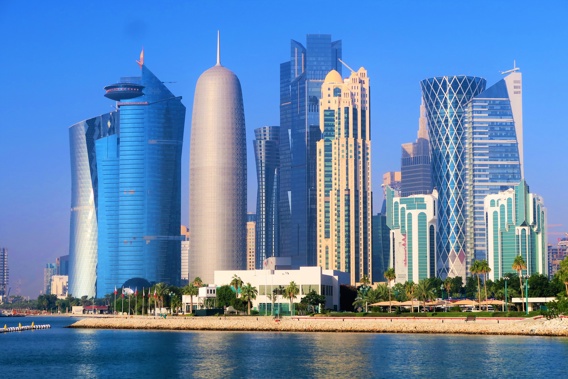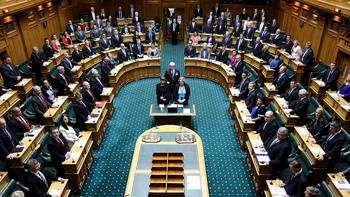
Like Dubai, its arch-rival in the Arabian neighbourhood, Doha strikes newcomers as a staggering paradox, where its religiously conservative streak rubs shoulders with rampant consumerism. I was standing outside the glossy luxury stores in The Pearl where the swirling white dishdashas of traditionally-dressed men billowed like sails in the warm Gulf breeze, as they strolled by the Aston Martin showroom. You could fit 24 Qatars’ into New Zealand’s footprint. It is the size of Northland, with Doha lustily playing the role of torch-bearer for Qatar’s immense wealth – home to the highest per capita income in the world. Qatar owns more London real estate than the Queen – including Harrods.
For all its fascinating contradictions, the global stage beckons, with Qatar gearing up to host the FIFA World Cup in 2022. It was a topic that constantly cropped up in my conversations with locals, who were anxious to reassure me that all the stadiums will be climate-controlled to ensure fans and players don’t cook. And they have certainly invested mega-bucks deploying cutting-edge cooling technology to their show-piece venues. It was my first visit to Doha, an increasingly popular stopover for long-haul travellers to and from Europe flying Qatar Airways. Hamad International Airport is just a fifteen minute drive from downtown, a sparkling new airport that hums with user-friendly sleek efficiency.
As a quick-hit, Doha makes for a rewarding stopover, where you’ve got all the flashy and futuristic bling of Dubai, overlaid with deep pockets of old world Doha, where tradition, heritage and culture abounds. I stayed in the downtown district at the Mandarin Oriental. It was just a ten minute walk from the hotel to Doha’s spiritual heart, the sprawling Souq Waqif, where Doha’s Arabic roots are to the fore. They’ve been trading on the site for hundreds of years and the souq you see today was substantially rebuilt to restore its former glory, some years ago.
Within its evocative honeycomb of alleyways, over 1200 pint-sized stores peddle a plethora of goodies, from spices, honeys, sweetmeats and souvenirs to potent Arab perfumes and intricately embroidered robes. I’ve got a soft spot for frankincense and binge-bought a stack of it at bargain prices. Like stepping back in time, you’ll see wood carvers and tailors busily beavering away within their diminutive stores. The gold souk is a glittering treasure-chest of temptation and traditionally a tractor-beam for young couples after they have decided to tie the knot.
The animal souk was little confronting, with over-heated pet bunnies panting in the desert heat and tanks over-loaded with baby terrapins fighting for space, but the puppies happily played in their clean cages, well-stocked with food and water. The vast array of birdlife on sale, particularly exotic parrots, made it a veritable Aladdin’s menagerie. Falconry and camel racing maintain revered sporting status in Qatar. Adjoining the souk, a pampered herd of camels, largely used for state ceremonial purposes, can be admired up close. The falcon souk is a hive of activity, where like champion race horses, they can sell for hundreds of thousands of dollars. Across the road, Doha has a dedicated falcon hospital in Doha, complete with surgical facilities and custom-formulated falcon energy drinks, if your bird is feeling poorly.
Spilling out onto the winding pedestrian streets wrapping around the souk’s exterior are a wealth of Middle-Eastern restaurants, showcasing Persian, Turkish, Iraqi, Syrian, Lebanese, Yemeni and Qatari cuisine. Kabsa, rice with chicken, is a Qatari standard, and a must-try. My pick from the street food stalls was a thin, crispy pancake, slathered in honey and a cup of local Karak tea. It cost about 60 cents. As steam rose from the stalls, so did constant smoke plumes from the spree of shisha lounges that were doing a brisk trade. As twilight took hold, I joined Doha Bus for their night lights tour, where the spangled skyscrapers of West Bay, seemingly trying to outdo one another, are the unabashed stars of the show.
The night tour climaxes with a soothing cruise back to the downtown district Corniche on a double-decker dhow with National Cruise. Eid was in full cry during my visit and all the traditional fishing boats in dhow harbour were festooned in fairy-lights, adding the festive glow and infectious celebratory spirit. The following morning, Doha Bus had also organised a private city tour with me, which was thoughtfully scheduled before the searing summer heat of the day cranked up. The company operate a wealth of touring options, whether it’s city sights or desert dune-bashing that takes your fancy. www.dohabus.com
As the mercury hit 40C, I was relieved to discover that Doha’s vast army of construction workers must down tools between 11am and 4pm, as a mandatory health and safety measure. My effusive guide, Samad, provided a kaleidoscope of insights into Doha’s head-turning development, packed with pointers on the essential experiences for first-time travellers. Highlights include the 7km-long horseshoe-shaped Corniche, an impeccably landscaped waterfront playground, packed with cutting-edge public amenities like open-air gym equipment and phone-charging stations.
Situated just off the Corniche, The Museum of Islamic Art is a chiselled jewel. Designed by I M Pei, of Louvre glass pavilion fame, the museum has an illusory quality of floating on the water. Pei was determined to encapsulate the essence of Islamic architecture in his design. The building’s bright white cubes reflect in the sea by day and are illuminated by night. The curved openings in the top tower resemble the eye slit of a burqa while the museum’s ceiling is a traditional geometric pattern. Calligraphy, Islamic patterns, jewellery and textiles from three continents comprise its vast collection.
Reaching back 1400 years, the museum charts the artistic flowering of Islam. The biggest unmissable is the necklace that once belonged to Shah Jahan, builder of India's Taj Mahal, studded with huge diamonds and emeralds. However, in a city teeming with museums and art galleries the latest opening is the mother of all block-busters. It’s a building that has elevated Doha’s stature in cultural arms race playing out among the Gulf States. The new national Museum of Qatar’s nearly mile-long loop of galleries, tells the story of how this tiny nation of nomadic bedouin and pearl divers became, with the discovery of natural gas, the world’s most wealthy country per capita in just half a century.
18 years in the making, French architect, Jean Nouvel, who also designed Abu Dhabi’s branch office of the Louvre, was inspired by the desert rose, an intricate subterranean rock formation, for his gob-smacking design which is highlighted by 539 creamy discs, tilting at all angles across the site. It looks like a fleet of flying saucers piled on top of each other, or the disgorged contents of gigantic crockery set. In contrast, the museum’s courtyard has been left with a pleasingly sandy surface, as though ready to host a caravan of itinerant traders.
Heading past the ostentatious skyscrapers of West Bay, take a wander through the cultural village at Katara, with its sweeping, waterfront promenade. Developed as the centre of Qatari creativity, it’s a hot-spot for contemporary artists. From there, it’s a short hop to the Pearl, an artificial island that is Qatar’s premier address, with malls brimming with couture, and a circular marina lined with some of the planet’s priciest real estate. Gold Bentleys and limited-edition Ferraris were thick on the ground in these parts. The picturesque Qanat Quartier was inspired by Venice, with multi-coloured apartments, canals and bridges, aping the faded hues of Venice.
It’s shamelessly superficial – not that I’m one to judge. However, the imitation game looms large in Doha’s extra-splashy malls like Villaggio, complete with indoor Venetian canals, gondolas and painted blue skies. Also taking top-billing for mall rats is Doha Festival City, complete with theme park and an indoor snowfield, while Tawar Mall boasts a humungous trampoline park, for extra retail bounce. Give me the souq, anyday.
Alongside Doha’s insatiable love-affair with glamour shopping, weekend brunching in luxury hotels is off-the-charts popular. For sheer gluttony, the Doha Marriott has a 100-metre buffet spanning your full English to sushi and tacos. I opted for afternoon tea at the Mandarin Oriental, where the accent isn’t on craven gluttony but art – or dare I say, food porn. It’s also a magnificent place to stay, blending chic and contemporary design with touches of Qatari heritage. With nine distinct culinary experiences, palatial accommodations and a beautifully appointed spa, you’re just a stone’s throw away from that fabulous souk. www.mandarinoriental.com
Award-winning Qatar Airways, who have just scooped supreme honours at the Skytrax World Airline Awards, flies non-stop between Doha and Auckland, one of the world’s heroic ultra-long haul flights. Kiwis enjoy via-free entry into Doha. Experience a new standard of Business Class in your very own personal suite with privacy doors. QSuite has just been launched on the Auckland service, delivering first-class luxury to the Business Class cabin, including double lie-flat beds and private sliding doors. Beyond Doha, Qatar Airways flies to over 160 destinations worldwide. www.qatarairways.com
Mike Yardley is our Travel Correspondent on Jack Tame Saturday Mornings.
Take your Radio, Podcasts and Music with you









